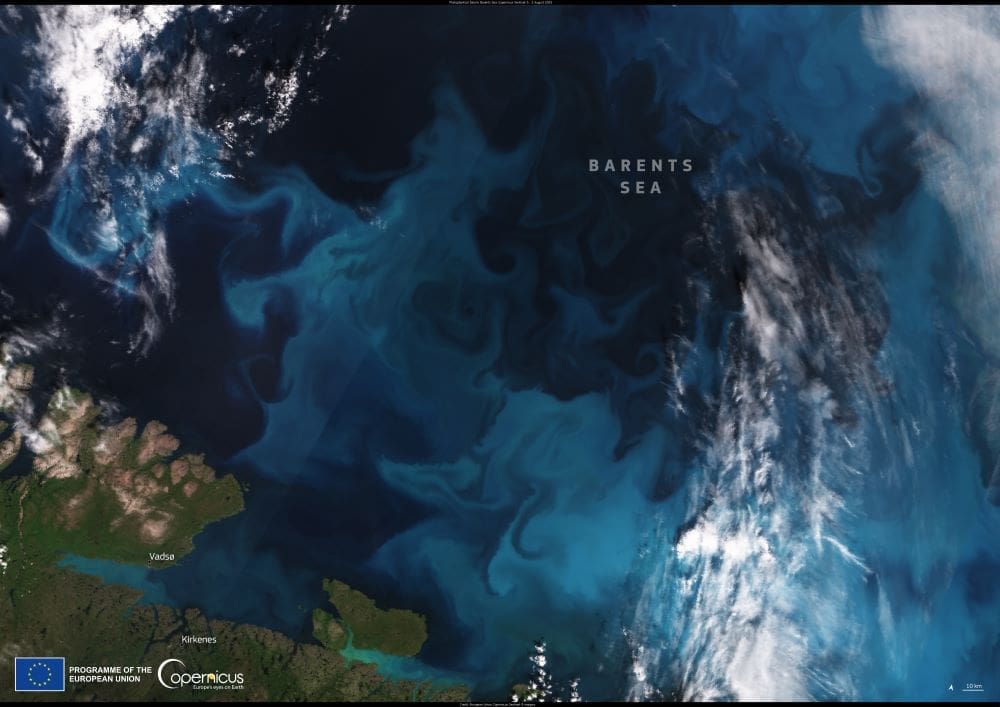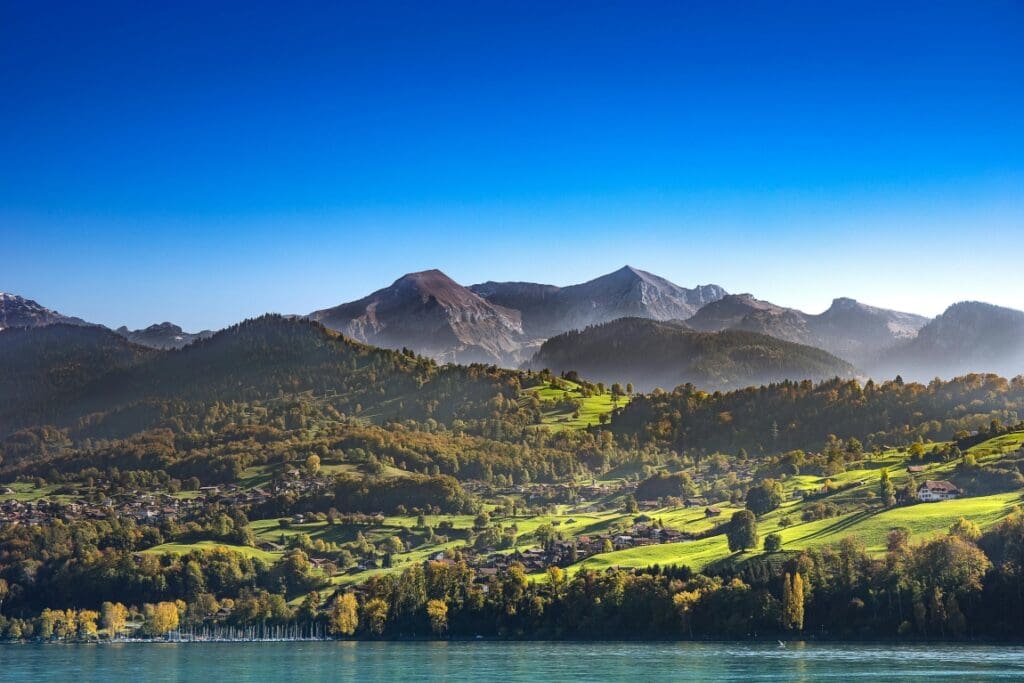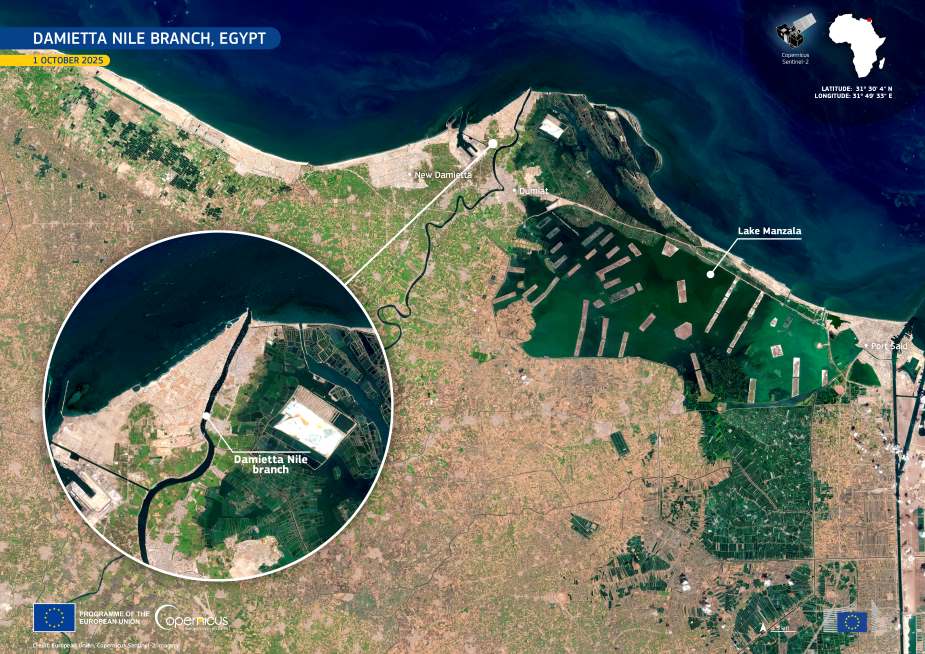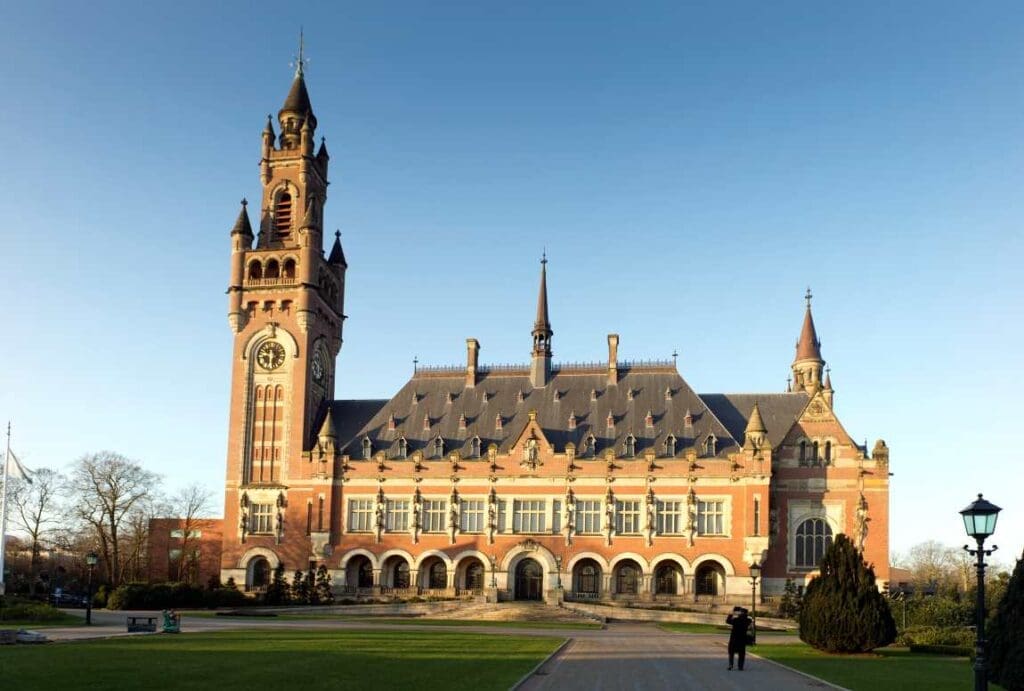A vivid swirl of turquoise and milky blue in the Barents Sea has been captured by the Copernicus Sentinel-3 satellite, revealing the striking presence of a summer phytoplankton bloom. Acquired on 2 August 2025, the image shows the surface of the ocean north of Scandinavia alive with microscopic plant-like organisms that play a foundational role in the Arctic marine ecosystem.
Phytoplankton form the base of the marine food web and are responsible for nearly half of global oxygen production. In the Arctic Ocean, including the Barents Sea, blooms occur seasonally when increased sunlight and melting sea ice allow light to penetrate the upper ocean. These conditions promote rapid growth of algae in the nutrient-rich surface waters, typically during the late spring and summer months.
However, Arctic marine dynamics are undergoing rapid changes. The Barents Sea, which connects the Atlantic Ocean to the Arctic Basin, is warming at a faster rate than many other parts of the globe. This warming is linked to a process known as Atlantification, in which warmer, saltier Atlantic water flows farther into the Arctic Ocean, altering ocean structure and biology. As noted in a 2023 study published in Communications Earth & Environment, the timing and location of phytoplankton blooms are shifting northward, and the bloom season is becoming longer.

This transformation is altering the Arctic marine carbon cycle. With increased meltwater and changing ocean currents, stratification of the water column intensifies, affecting nutrient availability. Some regions experience increased phytoplankton productivity, while others may face nutrient limitation over time, especially if deeper mixing becomes suppressed.
Satellite observations and in situ measurements show how algal blooms have changed in response to these warming trends. The researchers note that more open water due to sea ice loss leads to larger blooms, but the exact consequences for the Arctic food web remain uncertain. Changes in bloom timing could impact species that rely on seasonal synchrony, such as zooplankton, fish larvae, and seabirds.
The Copernicus Sentinel-3 image provides a striking visual of these ecological shifts. Operated by the European Space Agency and the European Commission, the Sentinel-3 satellites deliver high-resolution data on ocean color, sea surface temperature, and biological activity. This enables scientists to monitor marine ecosystem health and track how phytoplankton respond to environmental stressors such as warming, ice retreat, and altered ocean circulation.
The Barents Sea remains one of the Arctic’s most biologically productive regions, supporting rich fisheries and diverse marine life. But as ocean conditions evolve, the composition of phytoplankton communities may change, potentially disrupting long-established ecological relationships.
The image captured on 2 August is more than a visual spectacle. It offers a snapshot of a system in flux – one that scientists are racing to understand as climate change reshapes the Arctic Ocean at an unprecedented pace.
Featured image credit: European Union, Copernicus Sentinel-3 imagery



